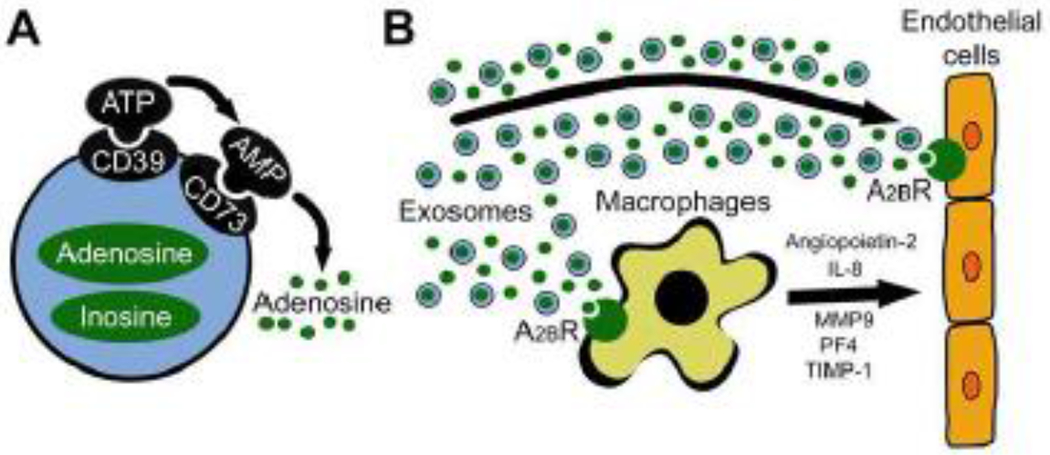Figure 6.

A schema of endothelial cells reprogramming by tumor-derived exosomes (TEX). (A) TEX carry ectonucleotidases CD39 and CD73 on their surface, which enzymatically produce adenosine. In addition to these surface-bound molecules, exosomes encapsulate adenosine and inosine. (B) TEX interact directly with endothelial cells by delivering/producing adenosine and inducing an A2BR-mediated stimulation of endothelial cell growth. Also, TEX reprogram other cells in the tumor microenvironment to release pro-angiogenic factors. Specifically, TEX-associated adenosine binds to A2BR on macrophages and stimulates the secretion of angiopoietin-2, interleukin 8 (IL-8), matrix metallopeptidase 9 (MMP9), platelet factor 4 (PF4) and tissue inhibitor of matrix metalloproteinases 1 (TIMP-1) which ultimately stimulate angiogenesis.
